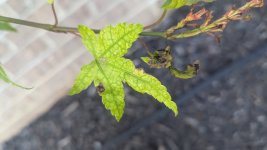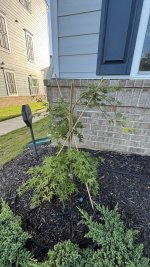vikaviolin
Seed
- Messages
- 3
- Reaction score
- 1
I have a baby Japanese Ryusen maple and I started to notice the new leaves at the end of this one branch are turning black and dying. The rest of the leaves on the tree are green and healthy, just the ones at the end of this branch look not as healthy... It's been pretty hot here and the tree does have exposure to full sun in the afternoon. I don't know if it's leaf scorch, underwatering or possible a fungal disease...Does anyone know what the problem could be? Thank you so much!!!





